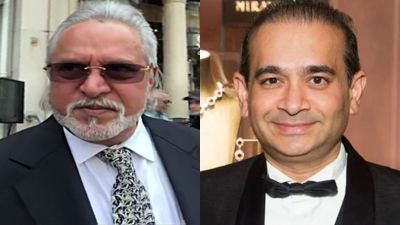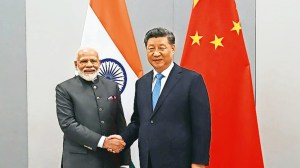Stay updated with the latest - Click here to follow us on Instagram
Water quality of west-flowing rivers consistently poor for 7 yrs: MPCB
The west-flowing rivers Vaitarna, Patalganga, Ulhas, Balganga and their tributaries such as Tansa, Bhasta and Barvi are used as sources of drinking water.
 The west-flowing rivers Vaitarna, Patalganga, Ulhas, Balganga are used as sources of drinking water, (Express Photo: Vasant Prabhu)
The west-flowing rivers Vaitarna, Patalganga, Ulhas, Balganga are used as sources of drinking water, (Express Photo: Vasant Prabhu)
The quality of water in west-flowing rivers in the state, some of which are sources of drinking water supply to Mumbai, has been consistently poor for the last seven years, the report on Water Quality Status of Maharashtra published by the Maharashtra Pollution Control Board (MPCB) has found. While monitoring these rivers in Mumbai, Thane, Raigad, Ratnagiri districts, the report found that the annual average Water Quality Index (WQI) of Mumbai district had been consistently in ‘bad to medium’ category since 2007.
The west-flowing rivers Vaitarna, Patalganga, Ulhas, Balganga and their tributaries such as Tansa, Bhasta and Barvi are used as sources of drinking water. “The surface water in the vicinity of urban areas was found to be most polluted,” said the report prepared by The Energy and Resources Institute (TERI) based on data on the water quality monitored by MPCB.
A WQI of above 63 indicates ‘good’ surface water quality, while a WQI of 38 or less indicates ‘bad to very bad’ water quality, i.e. polluted. Moreover, the Bhima upper sub-basin of Krishna basin, which covers Mumbai, Thane and Pune regions, was recorded to be the most severely polluted in Maharashtra, with high annual average fecal coliform levels being recorded in the rivers of this basin. Release of semi-treated domestic waste water is one of the major reasons for the pollution.
In contrast, the WQI at Raigad and Ratnagiri was in ‘good to excellent’ category, while in Thane, the WQI was in ‘medium to good’ category during most of the years, said the report. According to scientists, drinking water is not drawn from the polluted stretches downstream, but river pollution kills fish and associated ecosystems. “We draw drinking water from the upstream areas, where effects of urbanisation and industrialisation are not felt, so the drinking water is relatively safe. Pollution levels are very high by the time the river meets the sea, killing fish and affecting migratory birds and mangroves as well as the vegetation around,” said Dr Anjali Parasnis, Associate Director, TERI’s Western Region. “River as well as sea pollution make fish sick and through the process of biomagnification affects the higher food chain,” she added.
Meanwhile, sea water quality at Worli seaface and the beaches of Versova, Juhu and Girgaum was in the range of ‘bad to medium’ throughout 2013-14. During this period, the quality of sea water along Thane and Mumbai coastline remained in the ‘bad’ category, the report found.
Of the total 250 water quality monitoring stations (WQMS), the highest in the country, 156 monitor sea and creek water, 10 monitor drains and 50 monitor groundwater. Mumbai has 10 stations while Thane has 18 monitoring stations. Over the last two years, only 30 per cent of the observations across all the monitoring stations on the coastline were seen to be in the category of ‘good to excellent’, while most of the time ‘moderate’ quality of water was recorded.
anjali.lukose@expressindia.com







